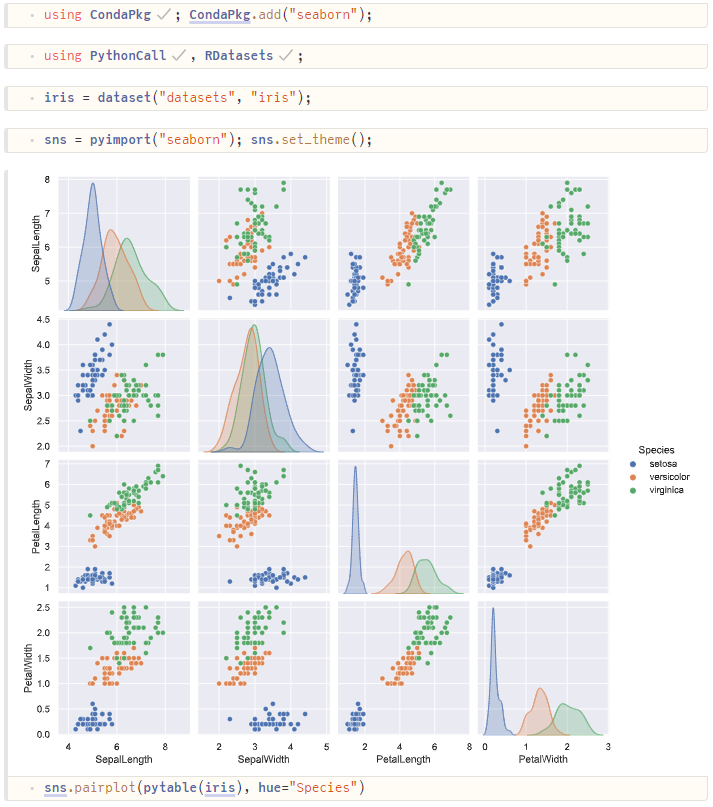Bringing Python® and Julia together in seamless harmony:
- Call Python code from Julia and Julia code from Python via a symmetric interface.
- Simple syntax, so the Python code looks like Python and the Julia code looks like Julia.
- Intuitive and flexible conversions between Julia and Python: anything can be converted, you are in control.
- Fast non-copying conversion of numeric arrays in either direction: modify Python arrays (e.g.
bytes,array.array,numpy.ndarray) from Julia or Julia arrays from Python. - Helpful wrappers: interpret Python sequences, dictionaries, arrays, dataframes and IO streams as their Julia couterparts, and vice versa.
- Beautiful stack-traces.
- Works anywhere: tested on Windows, MacOS and Linux, 32- and 64-bit, Julia 1.0 upwards and Python 3.5 upwards.
⭐ If you like this, a GitHub star would be lovely thank you. ⭐
To get started, read the documentation.
Example 1: Calling Python from Julia
In this example, we use PythonCall.jl from an IJulia notebook to inspect the Iris dataset:
- We load the Iris dataset as a Julia
DataFrameusingRDatasets.jl. - We use
pypandasdataframe(df)to convert it to a Pythonpandas.DataFrame. - We use the Python package
seabornto produce a pair-plot, which is automatically displayed.

Example 2: Calling Julia from Python
In this example we use the Python module juliacall from an IPython notebook to train a simple neural network:
- We generate some random training data using Python's
numpy. - We construct and train a neural network model using Julia's
Flux. - We plot some sample output from the model using Python's
matplotlib.pyplot.


